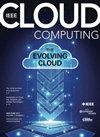折纸推理:使用硬件enclave的私有推理
Q1 Computer Science
引用次数: 5
摘要
这项工作提出了Origami,这是一个框架,通过结合飞地执行,加密盲化,穿插基于加速器的计算,为大型深度神经网络(DNN)模型提供隐私保护推理。Origami将ML模型划分为多个分区。第一个分区接收SGX enclave内加密的用户输入。enclave对输入进行解密,然后对输入数据和模型参数应用加密盲。层计算被卸载到GPU/CPU,计算输出返回到enclave, enclave使用SGX内部存储的解盲因子对噪声数据进行解码。每个DNN层都可以重复这个过程,就像之前在Slalom工作中所做的那样。然而,数据盲化和解盲化的开销是可伸缩性的一个限制因素。折纸依赖于经验观察,即即使是强大的条件GAN对手也不能使用前几层之后的特征映射来重建输入。因此,Origami动态切换到直接在加速器上执行DNN层的其余部分。我们的经验证明,使用折纸,一个条件GAN对手,即使有无限的推理预算,也不能重建输入。与在SGX中运行整个VGG-19模型相比,Origami推理将私有推理的性能从使用Slalom时的11倍提高到15倍。1 x。本文章由计算机程序翻译,如有差异,请以英文原文为准。
Origami Inference: Private Inference Using Hardware Enclaves
This work presents Origami, a framework which provides privacy-preserving inference for large deep neural network (DNN) models through a combination of enclave execution, cryptographic blinding, interspersed with accelerator-based computation. Origami partitions the ML model into multiple partitions. The first partition receives the encrypted user input within an SGX enclave. The enclave decrypts the input and then applies cryptographic blinding to the input data and the model parameters. The layer computation is offloaded to a GPU/CPU and the computed output is returned to the enclave, which decodes the computation on noisy data using the unblinding factors privately stored within SGX. This process may be repeated for each DNN layer, as has been done in prior work Slalom. However, the overhead of blinding and unblinding the data is a limiting factor to scalability. Origami relies on the empirical observation that the feature maps after the first several layers can not be used, even by a powerful conditional GAN adversary to reconstruct input. Hence, Origami dynamically switches to executing the rest of the DNN layers directly on an accelerator. We empirically demonstrate that using Origami, a conditional GAN adversary, even with an unlimited inference budget, cannot reconstruct the input. Compared to running the entire VGG-19 model within SGX, Origami inference improves the performance of private inference from 11x while using Slalom to 15. 1x.
求助全文
通过发布文献求助,成功后即可免费获取论文全文。
去求助
来源期刊

IEEE Cloud Computing
Computer Science-Computer Networks and Communications
CiteScore
11.20
自引率
0.00%
发文量
0
期刊介绍:
Cessation.
IEEE Cloud Computing is committed to the timely publication of peer-reviewed articles that provide innovative research ideas, applications results, and case studies in all areas of cloud computing. Topics relating to novel theory, algorithms, performance analyses and applications of techniques are covered. More specifically: Cloud software, Cloud security, Trade-offs between privacy and utility of cloud, Cloud in the business environment, Cloud economics, Cloud governance, Migrating to the cloud, Cloud standards, Development tools, Backup and recovery, Interoperability, Applications management, Data analytics, Communications protocols, Mobile cloud, Private clouds, Liability issues for data loss on clouds, Data integration, Big data, Cloud education, Cloud skill sets, Cloud energy consumption, The architecture of cloud computing, Applications in commerce, education, and industry, Infrastructure as a Service (IaaS), Platform as a Service (PaaS), Software as a Service (SaaS), Business Process as a Service (BPaaS)
 求助内容:
求助内容: 应助结果提醒方式:
应助结果提醒方式:


